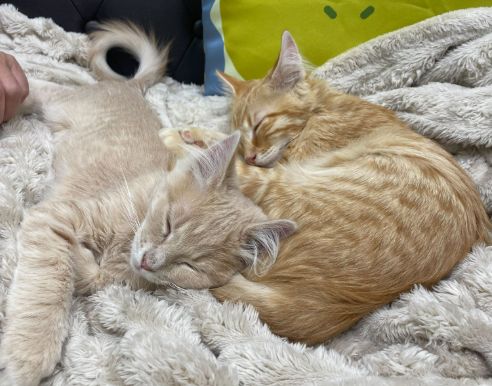FHV-1 is the leading cause of ocular and upper respiratory infections in cats. It is a species-specific virus, which means it can only be passed among cats. It is a very common virus, as it is highly contagious and once it infects a cat, they are infected for life. Almost all cats are exposed to this virus – the good news is, only about 50% of cats will show symptoms, and many of those only rarely.
There is a range of symptoms that may be seen depending on the severity of disease. These may include any of the following: ocular and nasal discharge, loss of appetite, lethargy, conjunctivitis, corneal ulcers, sneezing, fever.
Cats that are infected as kittens are usually the most severely infected due to their poor immune response. Some of them may have permanent ocular lesions, or permanent nasal deformity which can lead to recurrent nasal and sinus inflammation and infection throughout the course of their lives.
There is a test that can be run to see if your cat is infected with Feline Herpesvirus – however, a positive result could indicate carrier status rather than active infection. Therefore, a diagnosis is usually based on the symptoms and history combined with a thorough physical exam by your veterinarian.
There is no cure for feline herpesvirus and cats that are infected will be carriers for life. However, there are some treatments that can ameliorate the symptoms as well as decrease the viral load. Daily anti-viral supplements or stronger anti-virals may be prescribed in the case of a flare-up. Cats with Feline Herpesvirus flare-ups are prone to secondary bacterial infections, so antibiotics may be prescribed as well. Managing stressors can help decrease the frequency of flare-ups that carrier cats have. Most cats infected with feline herpesvirus live a normal lifespan.
Vaccination can help decrease the symptoms associated with feline herpesvirus. Vaccinating your cat regularly can help decrease the viral load and decrease flare-ups associated with herpesvirus. Vaccinated cats tend to develop milder symptoms and their flare-ups last for a shorter period of time compared to unvaccinated cats.

